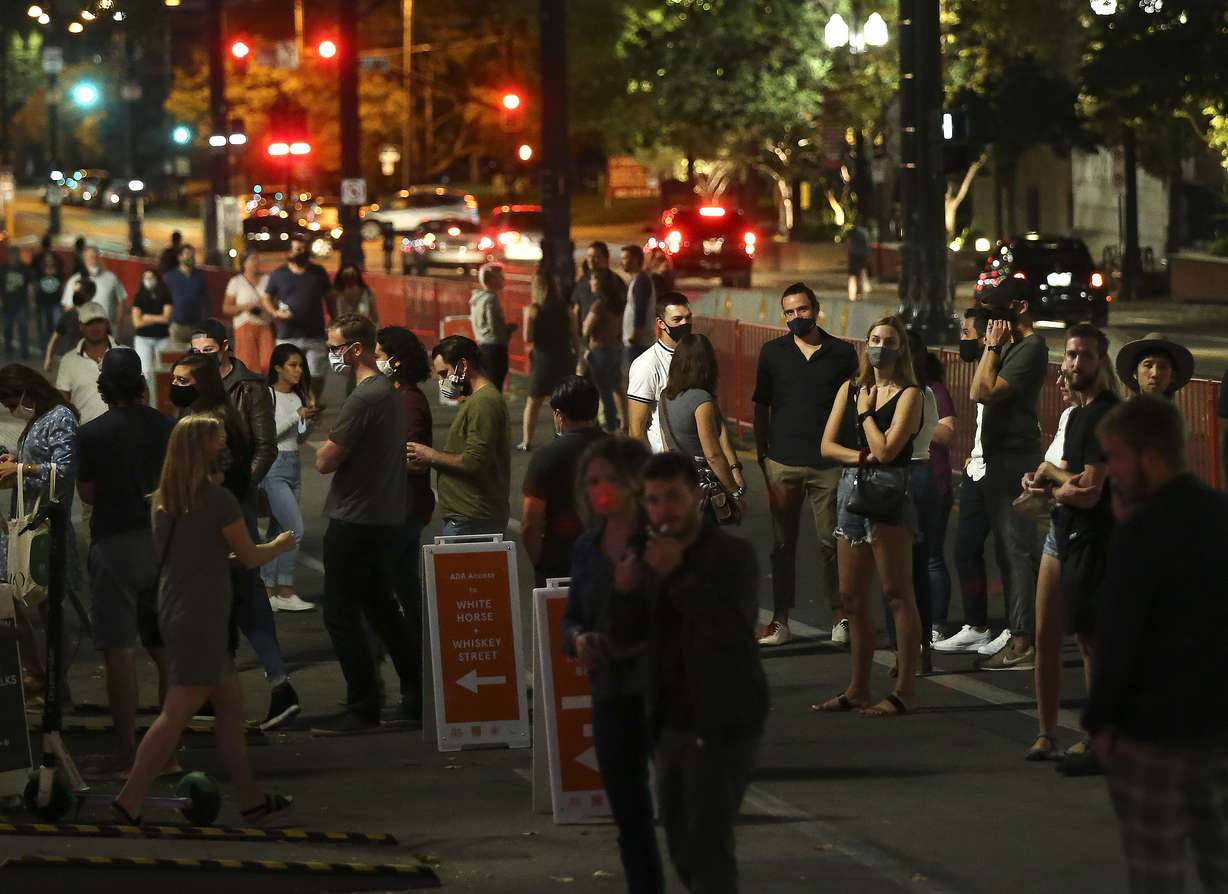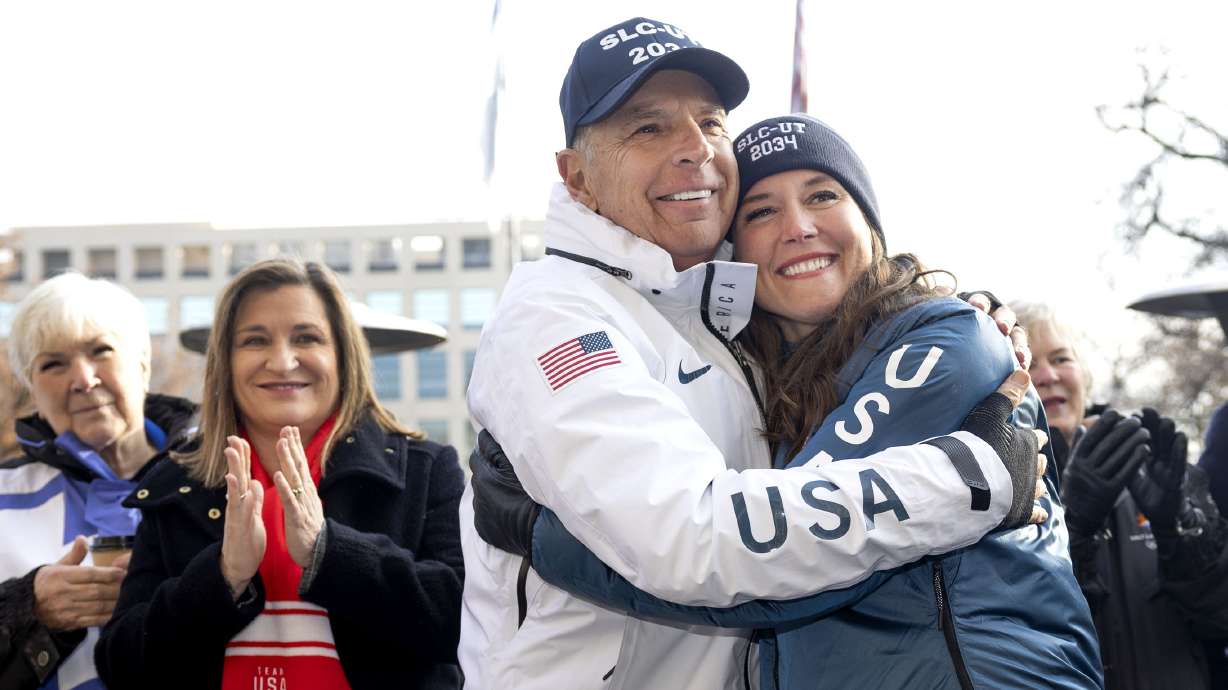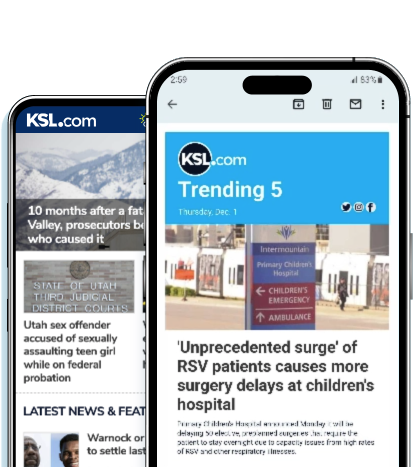Estimated read time: 6-7 minutes
This archived news story is available only for your personal, non-commercial use. Information in the story may be outdated or superseded by additional information. Reading or replaying the story in its archived form does not constitute a republication of the story.
SALT LAKE CITY — Dejan Eskic was about 10 years old when his family packed up everything and left the Balkans for the United States, settling in the Salt Lake City area.
This was 1997, and he didn't know much about Utah aside from its predominant religion, The Church of Jesus Christ of Latter-day Saints, and that there was an energy around town about the upcoming 2002 Winter Olympics. When the Games finally arrived, he took the bus up State Street to downtown Salt Lake City, where he soaked up the whole global extravaganza.
"This is a core memory," he says, recalling it more than two decades later. "That's like one of my first memories in the U.S., having that experience."
The energy about the Winter Olympics and Paralympics Eskic remembers from when he first arrived in Salt Lake City is back again. The International Olympic Committee on Wednesday named Salt Lake City as the preferred host of the 2034 Games, a big step toward the city locking down its bid next year.
The city may look much different now than in 2002, though.
Eskic, now a senior research fellow and scholar at the University of Utah's Kem C. Gardner Policy Institute, studies Salt Lake City's economic and demographic trends among other things,
He sees Salt Lake City rising into the Mountain West's "foremost and flourishing center" for commerce, sports, entertainment, culture and education. Its growth even through a post-COVID-19 pandemic world is defying the odds in that it's gaining people, jobs and commerce even as other urban cores in the region slide.
In short, he believes Utah's capital is on the verge of becoming what he calls the next "great American city." That's why he, along with downtown and city leaders, believes that hosting the Winter Olympics in 2034 fits perfectly with where Salt Lake City is going as it moves past the pandemic.
Salt Lake City's reform
Downtown Salt Lake City already looks different from 2002, but it is, in many ways, returning to what it once was.
Its population topped out at about 190,000 people in 1960 during a time in which it featured an eclectic mix of families. Many of those families fled to the suburbs beginning in the 1960s, sparking a population slide of 15% over the next three decades.
Downtown Salt Lake City became more of a "vertical office park" as a result, said Dee Brewer, executive director of the Salt Lake City Downtown Alliance, speaking at a panel discussion on the current state and future of downtown Salt Lake City hosted by the Gardner Institute and The Salt Lake Tribune Thursday morning.
Most of the skyscrapers that emerged in this era were built for the workers who commuted from outside downtown, or even outside of the city, rather than serve as residential buildings, and the city was primarily active during work hours.
Salt Lake City has since captured a second wind, soaring past its previous population record during the 2020 census after three decades of growth. More recent Census Bureau estimates list its population at over 200,000 for the first time.
How people use downtown is evolving again, too. Office worker activity downtown is down 48%, and overall activity remained at 82% of pre-pandemic levels this spring, but the number of downtown visitors is up since 2019, Brewer points out. More than 60% of those who come downtown are visitors who arrive for events, activities, bars and restaurants in the district.

Salt Lake City Mayor Erin Mendenhall explains that the city was forced to be "creative" to help out downtown businesses during the pandemic. It closed Main Street off to cars and turned it into a walkable promenade for downtown businesses to attract these visitors as the traditional downtown office employees worked from home, as one way to help out.
The city's post-pandemic trends are different from many other urban cores in the state, Eskic adds. He notes that retail and restaurant sales are bouncing back well above other cities in the state because the city is pulling people back in from across the region.
The Gardner Institute released a paper Thursday highlighting how Salt Lake City is still a post-pandemic outlier. For instance, Salt Lake City's population grew 1.7% from July 2021 to July 2022 while most other urban cores in the state lost population. Only Lehi and South Jordan had bigger gains among cities with 50,000 residents or more in 2021.
That growth in the coming years is going to define our core and it's going to be the part of identity that we bring forward in 2034.
–Dee Brewer, executive director of the Salt Lake City Downtown Alliance
Downtown Salt Lake City is also projected to gain 4,230 units between this year and the end of 2025. The downtown population is expected to double to about 10,000 residents by then. The population is expected to continue to rise from there, especially as more future units will seek to woo families back in.
That's not to say there still aren't any challenges impacting the city, such as its declining youth population, a rise in statewide chronic homelessness, differences in poverty levels among neighborhoods, and environmental issues like air quality and water availability. But it shows that downtown Salt Lake City is rapidly evolving back into a community before it potentially hosts the Winter Olympics again.
"That growth in the coming years is going to define our core and it's going to be the part of identity that we bring forward in 2034," Brewer said.
What will downtown Salt Lake look like in 2034?
No significant capital investments are required for Utah to host the Games again in 2034, but city and downtown leaders acknowledge there will likely still be downtown infrastructure improvements to reflect changes already in motion.
That could mean more transit options, green space for residents to play in, community spaces, shops, bars, restaurants and maybe even a downtown school by 2034. If anything, Mendenhall believes the Olympics may just make it easier for the city and state to access federal funds to make the investments before the event takes place.
"We're doing it anyway, and I think that's what made our 2034 — or any Olympic guarantee — so sure," she said. "We're not doing it so we can get a Games ... and that's, I think, the sign of a strong community or strong city downtown core."
These trends, she adds, are also why she believes Major League Baseball and the National Hockey League are also interested in Utah.
In addition, the city recently adjusted its downtown zoning requirements that will allow for taller buildings in an effort to increase density and population in the future. Brewer said developers are also looking at converting a few of the city's office buildings that were constructed in Salt Lake's office commute era into residential spaces to meet the city's and state's housing demands, all signs of how the city has changed.
Eskic says he feels that same buzz in Salt Lake City as those years leading up to the 2002 Winter Olympics, but he now looks at downtown and views it in a new light because of how far it's come. There are many new housing options, transportation options and businesses to consider downtown.
He expects this to continue by the time the Winter Olympics are expected to return.
"It'll be a community," he said. "It's not just a destination during the workday, it is going to become a 24-hour community."









